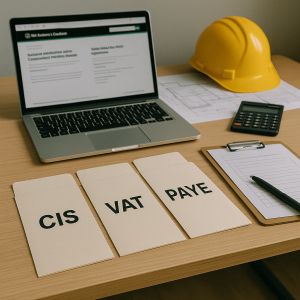📑 Pro Tip: Bookmark this page for quick access later!
Insulating your loft or roof effectively is one of the best ways to reduce energy loss, lower utility bills, and maintain a comfortable home. However, determining the correct amount and type of insulation can be challenging. Here’s a comprehensive guide to help you understand insulation requirements for lofts and roofs, including tips on achieving optimal thermal efficiency and complying with UK Building Regulations.
Contents
- Why Insulate Your Loft or Roof?
- UK Insulation Requirements
- Types of Insulation and Thickness Needed
- Loft Insulation Calculator
- How to Calculate Insulation Requirements
- Frequently Asked Questions
Why Insulate Your Loft or Roof?
Roof insulation is essential to reduce heat loss and improve energy efficiency. In fact, the Energy Savings Trust reports that up to 25% of heat loss occurs through uninsulated roofs. A well-insulated loft can cut heat loss by up to 26%, save an estimated £380 per year on energy bills, and reduce up to 1 ton of carbon emissions annually.
UK Insulation Requirements
To comply with UK Building Regulations, loft insulation in existing homes must achieve a U-value of 0.16 W/m²K or better. This generally requires at least 270mm of blanket insulation like mineral wool or a thermally efficient alternative.
The U-value measures the rate at which heat transfers through a material, with a lower U-value indicating greater insulation efficiency. Thicker insulation is typically required to achieve lower U-values, though materials like PIR boards offer strong insulation with less thickness compared to traditional materials.
Types of Insulation and Thickness Needed
Different insulation materials have unique thermal properties and thickness requirements:
| Insulation Type | U-value Range (W/m²K) | Recommended Thickness |
|---|---|---|
| Mineral Wool | 0.030 – 0.040 | 270mm |
| Cellulose | 0.036 – 0.042 | 270mm |
| PIR Board | 0.022 – 0.028 | 120mm |
For a precise calculation tailored to your loft’s exact dimensions, try our interactive loft calculator below.
Loft Calculator
Use the calculator below to input your loft dimensions and insulation type for a customised estimate of how much insulation you’ll need.
How to Calculate Insulation Requirements
Here’s how to measure and calculate the amount of insulation your loft or roof needs:
1. Measure Your Loft Area
Multiply the length and width of your loft space to determine the total area in square metres (m²). This will give you a starting point for estimating material quantities.
2. Check Joist and Rafter Depths
Measure the depth and spacing between joists (for cold lofts) or between rafters (for warm lofts). Joist depth is essential because it determines how much insulation the floor can hold. If your joists aren’t deep enough for 270mm of insulation, loft legs can be used to raise the floor.
3. Choose the Right Thickness
Insulation thickness varies by material. Generally, mineral wool and cellulose require 270mm to meet the 0.16 W/m²K U-value target, while PIR boards need only about 120mm. Always check with your supplier to verify the insulation’s thermal efficiency and calculate how much material you’ll need based on your measurements.
4. Account for Ventilation
Ensure a 50mm gap between the insulation and the loft floor for ventilation, as this prevents condensation and mould. Additionally, you may want to allow for a small surplus to accommodate any unexpected material losses during installation.
Frequently Asked Questions
How much does loft insulation save on energy bills?
Properly installed loft insulation can save around £380 annually on energy bills for a detached home, as it reduces heat loss by up to 25%. Homes with efficient insulation retain warmth during winter and stay cooler in summer, which reduces reliance on heating and cooling systems. Savings can vary depending on the size and age of your home, insulation material, and local climate. Older homes or those with poorly insulated lofts often experience the most significant savings once insulation is installed, making it one of the most cost-effective home improvements.
Do I need a professional for insulation installation?
While it’s possible to install loft insulation yourself, hiring a professional is often recommended for ensuring that installation meets UK Building Regulations and maximises thermal efficiency. Professionals bring the expertise needed to navigate challenges like uneven joists, ventilation requirements, and structural considerations, and can also provide valuable advice on insulation thickness and material choices based on your loft type. Some types of insulation, like sprayed foam or foamed-in-place insulation, require specialised equipment and are best handled by experienced installers. Additionally, professional installation can add to the property value and improve energy efficiency certifications.
Can I use multiple insulation types?
Yes, using a combination of insulation materials can be highly effective, especially in lofts with limited space. For example, layering PIR boards with mineral wool can help achieve the required U-value with less thickness, making it a good choice for areas where joist or rafter depth is limited. Combining different materials also allows you to balance cost and performance. For instance, placing a thin layer of high-performing PIR board followed by mineral wool can provide optimal insulation while keeping costs manageable. However, consult with a professional to ensure these materials work together efficiently.
Is there a difference between cold and warm loft insulation?
Yes, cold and warm loft insulation serve different purposes. Cold loft insulation is placed between the joists on the loft floor, creating a thermal barrier that keeps heat in the living spaces below, making it ideal for lofts used only for storage. This method leaves the loft space uninsulated, meaning the area above the insulation will remain cool.
Warm loft insulation, on the other hand, is installed between the rafters, insulating the entire loft space. This approach is preferable if you plan to use the loft as a living or storage space for items sensitive to temperature fluctuations. Warm loft insulation makes the loft space part of the thermal envelope of the home, keeping it warmer and more comfortable. Each method has its benefits, so consider the intended use of your loft when deciding which type of insulation to install.
Do I need to consider ventilation?
Yes, maintaining proper ventilation in the loft is essential. Without ventilation, moisture can build up in the insulation and structural components, leading to condensation, mould growth, and potential structural damage. To prevent this, it’s recommended to leave a 50mm gap between the insulation and the loft floor or roof material. This gap allows air to circulate, which helps to regulate temperature and prevent dampness.
In addition to leaving space, you may also want to consider adding vents or loft ventilation systems, especially if you’re installing thick insulation. This added ventilation is especially important in warm lofts, as the enclosed, insulated space can trap more moisture. By allowing fresh air to move through the loft, you can keep the insulation effective and protect the overall health of your home.
For accurate budgeting, try our cost calculators available here or for a full building estimate for your project, feel free to reach out to us below:











